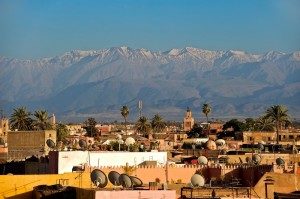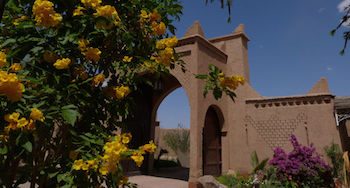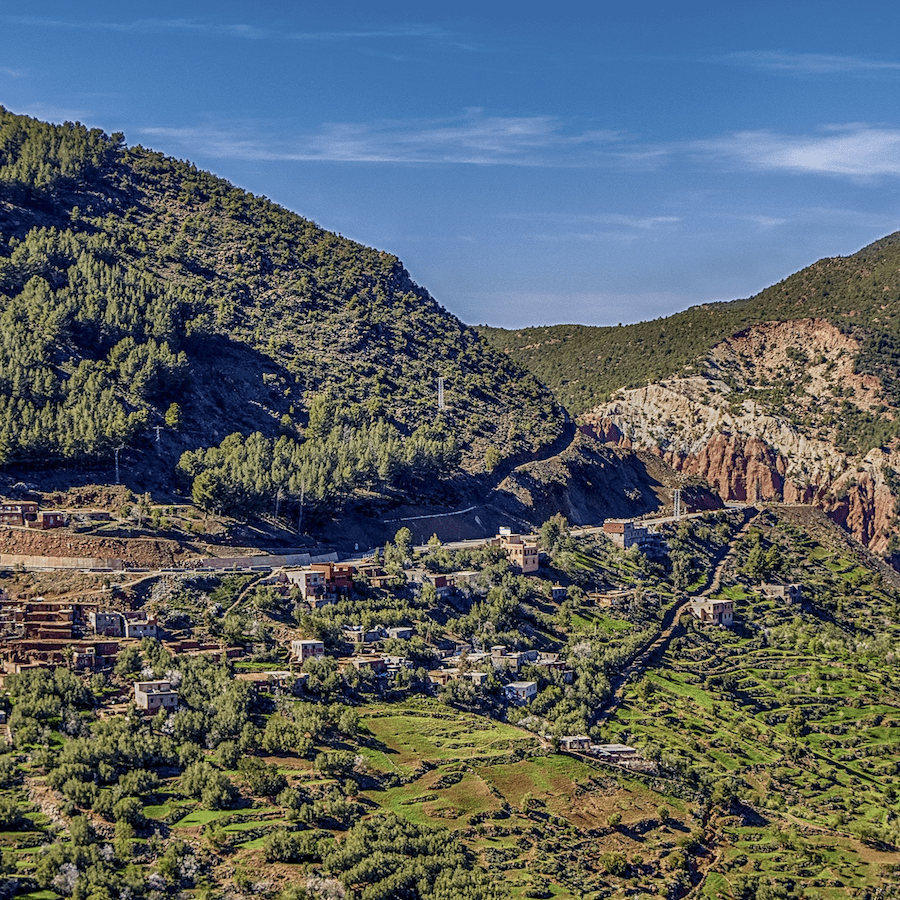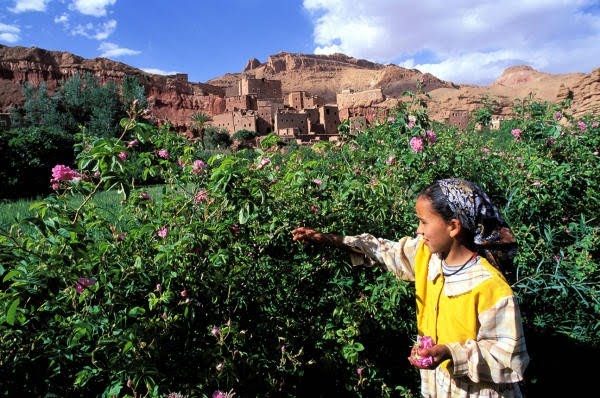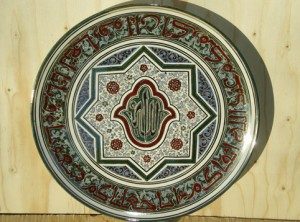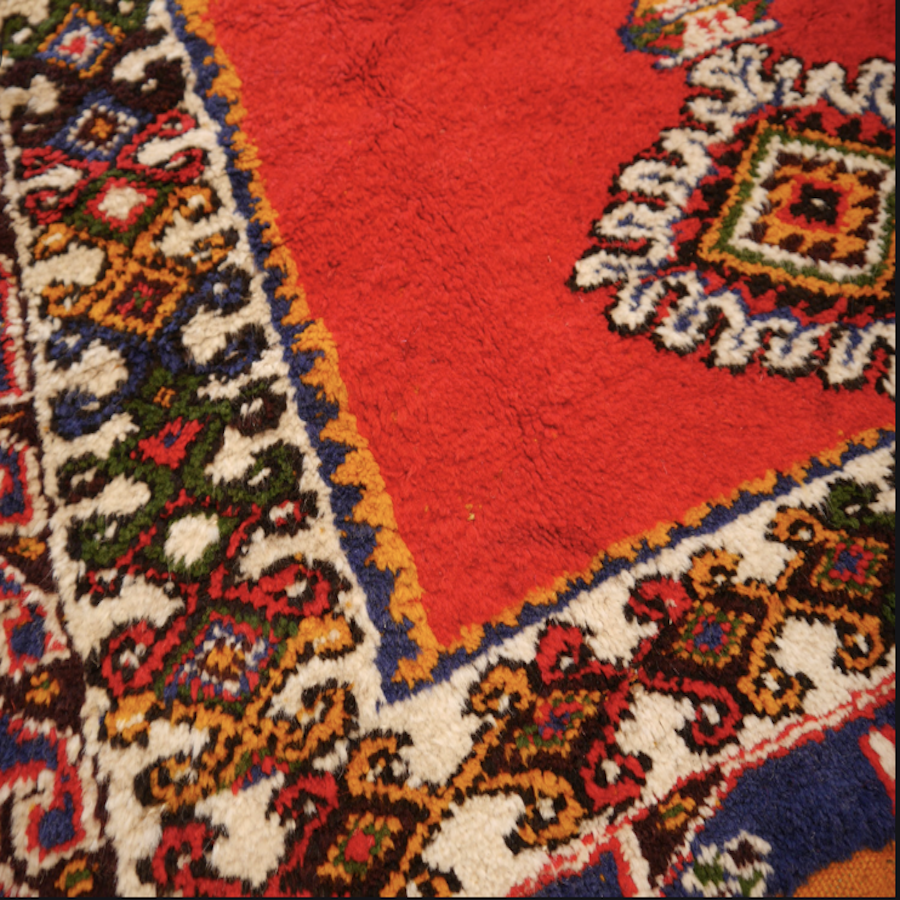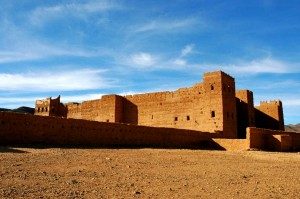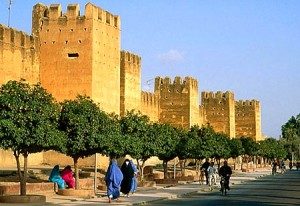Morocco’s “Red Hamra” city of Marrakech is an icon for travelers to Morocco. A visit to this North African country’s hotspot of Marrakech is a must. Morocco is exotic and the penchant of every travelers dream is to visit Marrakech. Marrakech offers landscapes to indulge in along with a bustling medinas and Berber villages just minutes outside. Here are Ten Great things to do in Marrakech.
Tag: Tours to Morocco
There are a number of Eco lodges (Atlas Mountain Hotels) in Morocco which offer travelers the opportunity to escape the urban environment and enjoy the beauty of its countryside and the rural communities. The Kasbah Toubkal at Imilil 60 km from Marrakech is one of the most famous. A converted Kasbah, it sits on a hill and is a ten minute walk from the village. Kasbah Toubkal surrounded by the mountains and a blissful Mountain Hotel worth more then a one night stay. It serves as a lodge for those planning to climb Mount Toubkal but it is also a brilliant getaway. Sitting on the terrace looking out at the surrounding countryside while at Kasbah Toubkal is a stunning experience.
The Ourika valley is 30 km from Marrakech and is one of the best places to visit in Morocco for hiking in the Atlas Mountains and seeing its unique countryside. Getting there by grand taxi of bus or one of the many tourist travel companies is easy. The valley starts at Souk Tnine de l’Ourika leading on to the village of Arhbalou then on to Tazzidfount leading up to the trekking area of Adrar Yagour which has prehistoric rock carvings. trekking further afield ahould be undertaken with a guide,equipment and proper planning.
Wine production in Morocco is believed to have been introduced by Phoenician settlers, and was definitely established in the era of Ancient Rome. Large-scale wine production with extensive vineyards was introduced into Morocco by the French during the protectorate as it was in Algeria and Tunisia. Today’s regions in Morocco that have become famous for wine are Meknes, Casablanca and Essaouira.
At the small town of El Kelaa M’Gouna (also referred to as the Valley of Roses) in the South of Morocco, a 140km East of Ouarzazate, in the heart of Dades Valley one can see the manual harvest of Damas roses and the Rose Festival in May each year.
There is a thriving local industry distilling rose water, introduced by the French in the 1930’s and cosmetic products such as soaps, gels, creams, sprays and oils and dried rosebuds these can be bought on site.The buds are dried for use in cosmetics, home decoration and cooking, while the petals are distilled into rose water and, ultimately, rose oil, a key ingredient in many perfumes. Distillation is made in two factories in the Valley of Roses area and in April and May it is possible to visit Kelaâ’s factory, set up in a former kasbah.In Kelaâ Des Mgouna , Morocco there is also a dagger factory, in the mellah, where the Jewish craft is perpetuated, with handles and sheaths made in cedar wood or in camel bones, ornate with silver, and fixed on blades coming from another small village a few kilometres away.
There are many Moroccan designers, artists and craftsmen breaking new ground and leading innovations in lifestyle and creativity. Moroccan Designers Ahmed Laghrissi, Hicam El Madi and Myriam Mourabit are three exceptional practioners of their art. All were born in Morocco and have been influenced by either great family artists, their environment and Moroccan visual arts and culture. When visiting Morocco on a Pottery and Zellij Tile Design tour or on your own, one can discover galleries, souks and private spaces filled with these and many other visual artists. Morocco is a mecca of great designers ranging from Moroccan pottery to furniture to tile work, painting and lighting.
The “red hamra” city of Marrakech has been sited as the best African Destination of the Year by the 19th World Travel Awards. The winners of the “World Travel Awards” are chosen by travel agents around the world. The World Travel Awards gives agents the opportunity to select leading travel destinations. Marrakech is the first Moroccan city to win the this title. Other cities that were nominated were Cape Town, Durban and Johannesburg (South Africa), along with Luxor (Egypt), Mount Kilimanjaro (Tanzania) and Victoria Falls (Zambia).
The Draâ Valley is Morocco’s longest river. It’s formation is that of the Dades River and Imini River and flows from the High Atlas Mountains southeastward to Tagounit and from Tagounit mostly westwards to the Atlantic Ocean somewhat north of Tan-Tan. The water from the Draâ is used to irrigate Palmeraies and small horticulture along the river. The inhabitants of the Draâ are called Drawi, used to refer to the dark skinned people of Draâ that make up the largest portion of its inhabitants. The Draa Valley originally was known as the Valley of Olives but when the 19th Century caravans passed through the date palms arose within the trails they traveled. The palms proved to be a better choice to continue as a grown commodity because they bare dates, are used to make baskets, leafy carpets and over shade for the inhabitants.
Taroudant is a Moroccan city located in the Sous Valley in the southern part of the country. It is situated east from Agadir on the road to Ouarzazate and south from Marrakech. Tarodaunt can be easily visited as a day tour from Agadir. Tarodaunt is called the “Grandmother of Marrakech” because it is a scaled down, slowed down town that resembles Marakech with its orange colored surrounding ramparts. Since Agadir is only one hour from Tarodaunt a Tarodaunt Tour is the perfect way to spend an afternoon when arriving from a cruise ship at the Agadir Port.

